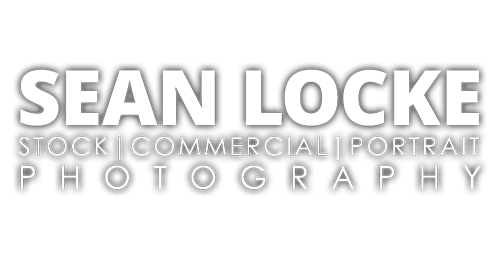Several days ago, Getty Images announced that it was making a large portion of the creative work it represents “free” for certain “non-commercial” websites to use. While many bloggers applauded the move on Twitter, most photographers across the internet decried the move, despite Getty’s comment to the contrary. What should you know about this move and why should it matter to you, as a contributor or as a stock image user?
First, How It Works
When a user goes to Getty Images and does a search, the screen populates with image samples. When they hover over one of the images, they will (or not, depending on the collection the image is in) see an option in the pop-up that looks like this: </> and offers the tooltip “Embed this image”.
Once that button is clicked, the page will then offer the following modal dialogue, that includes the embed code.
This code can then be copied and pasted into any page of html. This can include a WordPress based blog, like this one. For example:
Why It Matters To Stock Image Users
There are some things to keep in mind when taking advantage of this embedded viewer. If you notice in the second image above, Getty claims that by using the code, you agree to their terms of use. The part specific to the embedded player states:
Where enabled, you may embed Getty Images Content on a website, blog or social media platform using the embedded viewer (the “Embedded Viewer”). Not all Getty Images Content will be available for embedded use, and availability may change without notice. Getty Images reserves the right in its sole discretion to remove Getty Images Content from the Embedded Viewer. Upon request, you agree to take prompt action to stop using the Embedded Viewer and/or Getty Images Content. You may only use embedded Getty Images Content for editorial purposes (meaning relating to events that are newsworthy or of public interest). Embedded Getty Images Content may not be used: (a) for any commercial purpose (for example, in advertising, promotions or merchandising) or to suggest endorsement or sponsorship; (b) in violation of any stated restriction; (c) in a defamatory, pornographic or otherwise unlawful manner; or (d) outside of the context of the Embedded Viewer.
Getty Images (or third parties acting on its behalf) may collect data related to use of the Embedded Viewer and embedded Getty Images Content, and reserves the right to place advertisements in the Embedded Viewer or otherwise monetize its use without any compensation to you.
As a user of this embedded viewer, there are several things that should stand out to you.
“Getty Images reserves the right in its sole discretion to remove Getty Images Content from the Embedded Viewer” – As a user, you load up your blog with dozens of Getty hosted images. Remember, these images sit on the Getty server, so you are dependent on them to send them to the viewer’s browser when called. So, one day, they decide to remove the service, or just remove certain content. Now you’ve got a blog filled up with something like this:
Next is the matter of in what context the content can be used. The terms state “may not be used: (a) for any commercial purpose (for example, in advertising, promotions or merchandising) or to suggest endorsement or sponsorship;” but the whole concept of what is “commercial” is still a grey area. A Getty employee says images “will not be allowed in contexts that promote products or businesses”, but when your “product” is an image and an article that accompanies it, and you sell access to that, or advertising around that, that sounds like a usage that requires a license, at least to me. (This is separate from the discussion of commercial/editorial usage). If you, a user, are using an image in a way that is helping you to make money, shouldn’t that be shared with the creator of the content?
Most importantly, though, is the bit about Getty being allowed to “collect data” and “otherwise monetize its use without any compensation to you” that should alarm people. By using the content, you are essentially giving Getty a free look at your traffic and your visitors. They will be able to put this in a database and use it to their advantage. Then, one day, you’ll visit your site, and find you’ve given valuable real estate to whatever advertising Getty wants to load under the image, or over the image, or instead of the image. Basically, you’ve given up control to part of your blog to a company who’s goal is to make as much money for themselves while sharing the least with the people that enable it to make that money.
By the way, if you’re one of the more ethically minded folk out there, the contributors are seeing no income from this “free” usage. For an idea of how this could better work, witness the integration of Shutterstock’s collection with the Facebook advertising program. The user gets to use images for “free”, and the contributor gets paid. Win-win.
Not to mention, you’re still on the hook for the rest of the items in terms of use. Here’s a more in depth look at the issues that can arise while using this viewer: http://www.legalgenealogist.com/blog/2014/03/07/getty-images-not-quite-free-to-use/
So, keep all that in mind when you are thinking about this new tool.
Why It Matters To Stock Image Creators
First off, I’m not particularly convinced that any random person coming across this code on the internet can be held to their terms of use. It has been shown that website terms of use are not necessarily enforceable: http://www.forbes.com/sites/oliverherzfeld/2013/01/22/are-website-terms-of-use-enforceable/ . For instance, I could copy and paste the html code I found from another website, and never have to encounter their terms of use. In the below screenshot, you can see the source code for this blog article at dpreview.com . As far as I know, there is no internet law about not being able to utilize an html snippet from the source of a page. So, you can see one way for people to get away with claiming they knew nothing about the “terms of use”.
At least, previously, to get access to unwatermarked small size images, one had to have a Getty account, so it could be argued that as part of the account registration process, the terms were made accessible. Now, there’s no entry requirement at all.
Speaking of unwatermarked small images, this new system now makes it super easy to view and save such an image locally on your machine. Try it. Right click on the image up above and you’ll find it’s easy to view the image without the viewer or save it locally. Some say these images aren’t big enough to do anything with, but I say they are plenty big enough to include in a local ad flyer, a church presentation, a website header, etc. Without any sort of mark on there, there is no incentive for a user to not try to use them this way. Getty’s PicScout software would not be able to track down uses like these and stop the uses by legal means. PicScout is really only useful when dealing with Rights Managed images (below some degree of modification I assume). There is no way for the software to deal with images licensed Royalty Free, since a designer can use the content multiple times, with no need for reporting.
Speaking of Rights Managed, contributors who have content available under that license should be aware that there is RM content available through the viewer. The above image is an example. Since the value of a Rights Managed image license is somewhat based on the previous use and availability of an image, how can Getty command RM pricing when the image has been free to use, for anyone, worldwide? This may be where the terms of use comes into play, and they shut down all embedded uses of an image when they make a sale, but at that point, isn’t the horse already through the gate? The value of an image may have been decimated due to thousands of uses allowed by the very people charged with responsibly keeping the value of that content. Is it smart, anymore, to list images under an RM license with Getty?
Another problem is that, with this announcement, Getty is inextricably linking “free” with “stock image”. Internet users see the words “Getty” and “free” and “image”, and stop there.
They aren’t going to limit the assumption that they can use images with no cost and penalty to the Getty viewer. The understanding about copyright and usage all contributors have been working to build over the last several years just got destroyed. (And it doesn’t help that Twitters 140 character limit makes explaining the issue impossible).
Lastly, contributors should be, at the least, annoyed, that Getty is doing this under the guise of “promotional use”. It’s been discussed repeatedly that either the data they mine from people calling the view from their page, or the attribution space under the image, will eventually be used to make money for Getty. It’s easy to see that when a picture of shoes is called from the viewer, that an ad can easily be placed under that, making income for Getty. In fact, it almost seems like Getty should be paying a licensing fee to the contributor for this use, since the image is being used for commercial purposes. However, we’ve seen no indication that the contributor will ever see any income from this.
I’m not a lawyer, but I can’t understand how this “promotional use” of a contributor’s entire collection could legally stand up in court. From an old contract I have, it states:
Getty Images and Distributors may use Accepted Content to market you, your work, Getty Images, or Distributors, including use in composites that include Content supplied by a third party. No royalties will be paid on these marketing uses.
It doesn’t seem to me that the emphasis of this effort, especially due to the monetization coming, is on “marketing” work. Would a court agree? I don’t know.
So, Does It Matter?
It looks like this move will affect the industry somewhat. I don’t think it will be the “game changer” some people are saying. There’s too many issues, both for users and for contributors, as listed above, to make this as widely accepted as first thought. Bloggers are saying they don’t want to give up control like this. Contributors are leaving Getty out of protest. We will have to watch and see.














Another stellar recap, Sean.
My biggest concern on this move by Getty is that for the vast majority of non-photographers, this move makes them “think” that all of Getty’s photos are free for online use.
That’s sure been the reaction of a the many bloggers who have applauded this move with a standing ovation online.
And ultimately, whether it does hurt sales or not – it threatens the premise that an image has value and can’t be used for free in all situations. That “devaluation” is a real threat to photographers worldwide.
Free Images In-Bed with Getty
Once the damages-vs-benefits to G’s contributors becomes clear regarding Free-Images-Embed scheme, it will be interesting how contributors cast their votes – ie, to what degree they submit images and keep them there.
And, yes, what a lovely perk that Getty’s latest scheme will further erode concept in minds of the general public that one needs to pay money (!) to license image use.
Some articles:
http://www.insidehighered.com/blogs/library-babel-fish/price-free
http://thebigphotoblog.com/2014/03/gettymart-and-their-35-million-free-images/
http://blog.photoshelter.com/2014/03/getty-images-progressive-destructive/
http://abriefpause.com/2014/03/photos-getty-free-think/
http://www.bjp-online.com/2014/03/industry-concerned-about-getty-images-free-for-all-approach/
Sean, great posting. With your reputation as a businessman and successful stock photographer, it goes without saying most, i repeat, most stock photographers is not cheering about this. But the success or hopefully , failure of this “new idea” by Getty will depend entirely on bloggers,etc.. using this “great freebie by Getty”. which as you say, is not as free as it looks.
i wish bloggers will get to read this insightful article by you Sean, esp those bozos who are cheering it on twitter.
good stuff, mate !!!
Hi Sean, thanks for this post, great explanation. All the headlines seem to be stating that ” Getty is giving away 35million images ” – forgetting to mention that they are not their images but the people who contribute images to their site(s) in order to make a living or at least earn money.
I am so thankful for the opportunity to go my own way and not depend on any of the agencies, I might not get rich but I do not have to put my trust in those who are happy to abuse it.
cheers Sean for adding my comment. I also like to add that perharps all this hoo ha coming out of Getty could be a silver lining , or conversely the light at the end of the tunnel to be a train .
it depends on how WE , THE PEOPLE (the photographers) react to this.
be you the oldtimers of old-school (which i am ) , or the new age micro (which i am as well, most recently ).
i read your blog, and the other forums with great interest. everyone has a point , no one is a troll (even though some territorial animals on certain blogs or forums like to call anyone with a different perspective a troll).
but really, as the old saying goes, it is but folly to compete in the same side of the battlefield.
meaning to those not so poetic LOL… photographer who see another photographer as a foe, is cutting off their own hand. it’s much like the war-ing nations that ensure the nemesis to be divided by clans.
so long as we have infighting between ourselves ( Getty, Shutterstock, ex- believer of Bruce, haters of Bruce, whatever), there will always be the “exploitation” of image creators to our intellectual property, and the abuse of our work to their vileness.
I hope I express it correctly to make sense . DIVIDE TO CONQUER, has indeed led the prices of images of your hard work and mine to continually drop.
Until now, it is going to be free.
( House secret or private deal or not, who gives a rat’s arse).
I only know, so long as the DIVISION exists, all of us will be taken to the cleaners .
What say you, mate??? Keep up the good work !!!